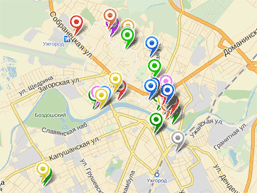Vitaliy Yepyshev: 'Dimensions of the Earth were measured in Uzhhorod"
Uzhhorod National University has many unique objects. One of them is a space research laboratory. Its history dates back to the beginning of the space age – 1957, when the flight of the first artificial Earth's Satellite was observed from here. A large scientific school has been developed on the basis of the laboratory and a few generations of physicists, astronomers have changed since then. The very laboratory is considered to be one of the best in Ukraine.
Currently, a research organization has two points of observation (astronomical observatories) in Ukraine: Uzhhorod and its surroundings. The laboratory is a member of the Ukrainian Astronomical Association. Our conversation is with a candidate of physical and mathematical sciences, a member of the International Astronomical Union, the head of the laboratory Vitaliy Yepishev about the establishment, development and prospects of the laboratory, and the first space observations.
- When did the issue of establishment of space research laboratory arise?
- The laboratory was established due to the Soviet Union plans to launch the first artificial satellite to the Earth’s orbit. It was decided to observe its flight carefully. Scientists knew that radar stations wouldn’t be enough for effective observation. Therefore. they also decided to conduct visual observation. There were no cameras here at that time and the observation could be carried out only in real time, observers had to draw the track of the satellite based only on visual data.
They selected experts for the observation from different regions of the USSR. These were largely the astronomers, who "knew the sky", because it was possible to draw the track of the satellite only against the background of the stars.
Uzhhorod became one of the observation points owing to Motria Bratiychuk, who was among the people trained to monitor the satellite.
When Motria Bratiychuk arrived in Uzhhorod, she had the task to select the observation team. Third-year students responded to her proposal to join the observation. She trained a dozen of students, taught them to use a stopwatch, the map of the sky, note the time and mark against the background of what stars the object was flying.
In the evening of October 6, 1957, observers from Uzhhorod were the first in the Soviet Union to see the first satellite, and most importantly, its track was followed and drawn against the background of the stellar sky!
In 1969, our station became a laboratory for space exploration. Then we opened post-graduate courses and added astrophysics as another specialization. Motria Bratiychuk brought polarizing film from Moscow, we began to use it in our research and became the pioneers of polarization observations. Later we began to do laser research. At the end of 1980 we had 38 staff members. It was the largest number of employees in the whole period of existence of the space research laboratory.
- Please, tell us about the telescopes your laboratory has.
- In the 1970-ies they installed a large telescope with Carl Zeiss lenses in our laboratory which was brought from Germany. It is used to observe geostationary satellites, which are at the distance of 38 thousand km. They bought 5 of these telescopes in the Soviet Union and one of them was brought to Uzhhorod. This is a great telescope, which can be used to conduct photographic observation of fast moving satellites and observe stars and other celestial bodies. Me and my colleague were the first in Ukraine to see the Comet Kohoutek through this telescope, when setting it.
Our laboratory, unlike many others, did not lose in the last two decades. On the contrary, we were recently armed with two modern telescopes. All our systems are automated and computerized, so my colleagues can watch the stellar sky in real time, using computers and telescopes.
In the village of Derenivka which is near Nyzhne Solotvyno, we have another observation station and want to move all our telescopes there, because there’s too much light in Uzhhorod and trees around the station obstruct.
We are doing a lot of work, since we are registered in the international center for observation of asteroids, we are conducting photometric reseach. By the way, some experts from the Yevpatoriya Center of the National Space Agency moved to Mukachevo after the occupation of the Crimea. Therefore, we are helping them.








